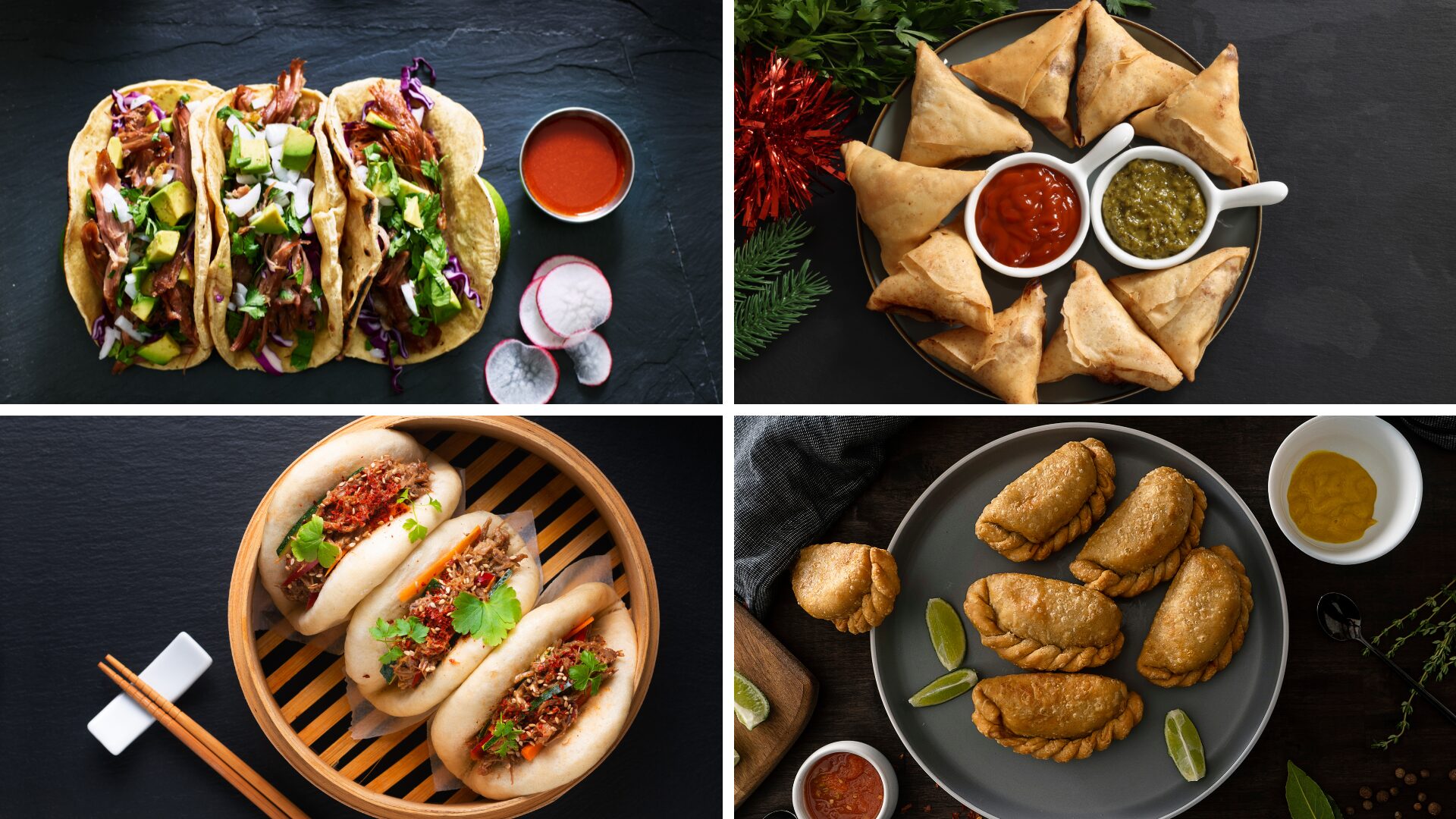Americans’ desire for diverse food is inspiring a new wave of interest in global street food. Tacos, dumplings, and more are making an impact in retail, undergoing seismic growth.
Global street food in frozen formats has contributed over $543.5 million in CPG sales and has grown 26% over the past two years, according to a recent report from Conagra. The Future of Frozen Food 2025 evaluated top frozen aisle trends to find hot and spicy foods and globally inspired eats are making an impact.
The Food Institute spoke with Megan Bullock, director of predictive science for Conagra Brands, as part of a recent report about how ingredients from around the world are shaping the domestic food and beverage scene, titled “Diverse Shoppers, Global Needs.”
When asked about where American consumers are learning about these myriad offerings, and how this impacts CPG at retail, Bullock identified two key areas.
“Foodservice is one of the forces shaping retail foods, but more heavily we’ve seen the shift come from user-generated content from social media,” she said. “Younger folks that have an appetite for culturally diverse foods.”
U.S. Census data reveals that these younger consumers are more culturally diverse, likely a motivator for an accelerated interest in these offerings: between 2010 and 2020 the percentage of consumers who consider themselves white (non-Hispanic) dripped by 5%, replaced by growth in nearly every other demographic.
“History would tell us that the younger consumers are defining the future,” so this sustained interest in diverse foods is likely here to stay, said Bullock.
From Food Truck to Freezer
Today’s consumers can’t get enough of global street food, and frozen snacks make it easy to eat them without having to understand the cooking techniques and traditions.
Consequently, Conagra found that sales of bao buns (in Mandarin pinyin: bāo zi) were up an astonishing 583% compared to two years before. Following are additional insights from the report (percentages versus 2 years ago):
- Taco sales increased 54%,
- Samosa purchases were up 32%
- Empanadas enjoyed a 31% growth, and
- Dumplings sustained an 18% spike in interest.
Moreover, the report found that Japanese, Cajun, and Indian cooking are among the fastest-growing frozen cuisines gaining market share.
Bullock noted how many globally inspired foods are benefiting from a slipstream of other relevant trends. For example, many Indian dishes are naturally plant-based, so interest in protein alternatives could steer consumers to experimenting with ingredients such as dal (lentils) or legumes.
The American Frozen Foods Institute weighed in on the category’s growth.
President and CEO Alison Bodor told FI that the category meets consumers’ demand for innovative, on-trend products. On the other hand, makers are able to protect the flavor and taste profile of unique recipes by freezing their products, translating into a more authentic dining experience.
“As shoppers seek cost-effective ways to enjoy meals at home, international frozen meals provide new culinary experiences while making their food budget go further,” she added.
This is So Much Bigger Than the Frozen Aisle
The frozen aisle also holds deeper implications for the entire grocery store, and one thing is clear: consumers want to see diverse foods in their local store. Circana data found that “ethnic aisle” revenues (an outdated term, but current industry standard) totaled $8.84 billion for the first 52 weeks ending June 16, 2024; unit sales over the period were up 0.8% and dollar sales grew 4.3%.
“This is a golden opportunity for grocery stores to turn aisles into global taste tours. Give customers the ingredients and the ‘how-to’ on incorporating them,” Julian Plateado, chef and owner of Nordic Catch told FI.
To learn more about how diverse foods are impacting today’s F&B landscape, become a member to access all FI monthly reports.
The Food Institute Podcast
When it comes to data in the food-away-from home sector, what are the major challenges and opportunities companies are facing today? Tibersoft’s Chris Hart joined The Food Institute Podcast to discuss how collaboration and data interoperability will be a key theme for the foodservice sector in the years to come.











